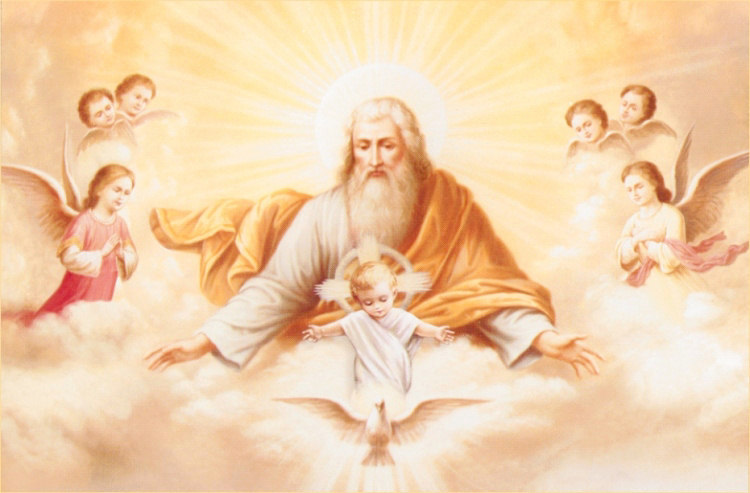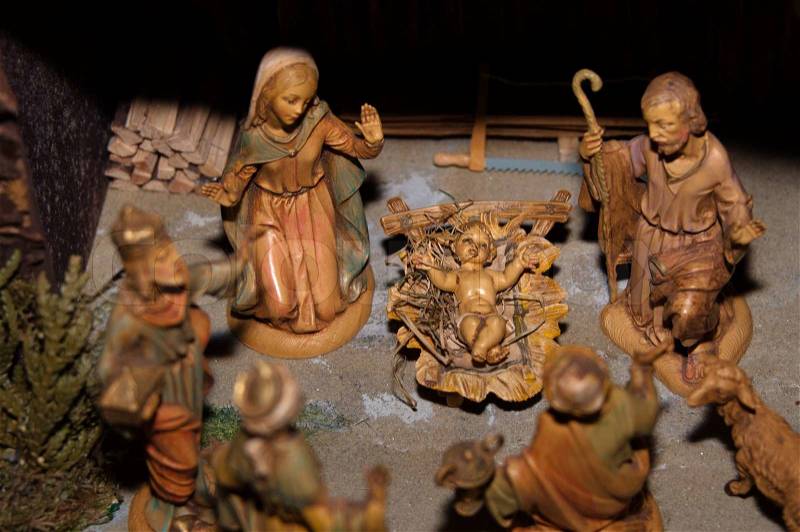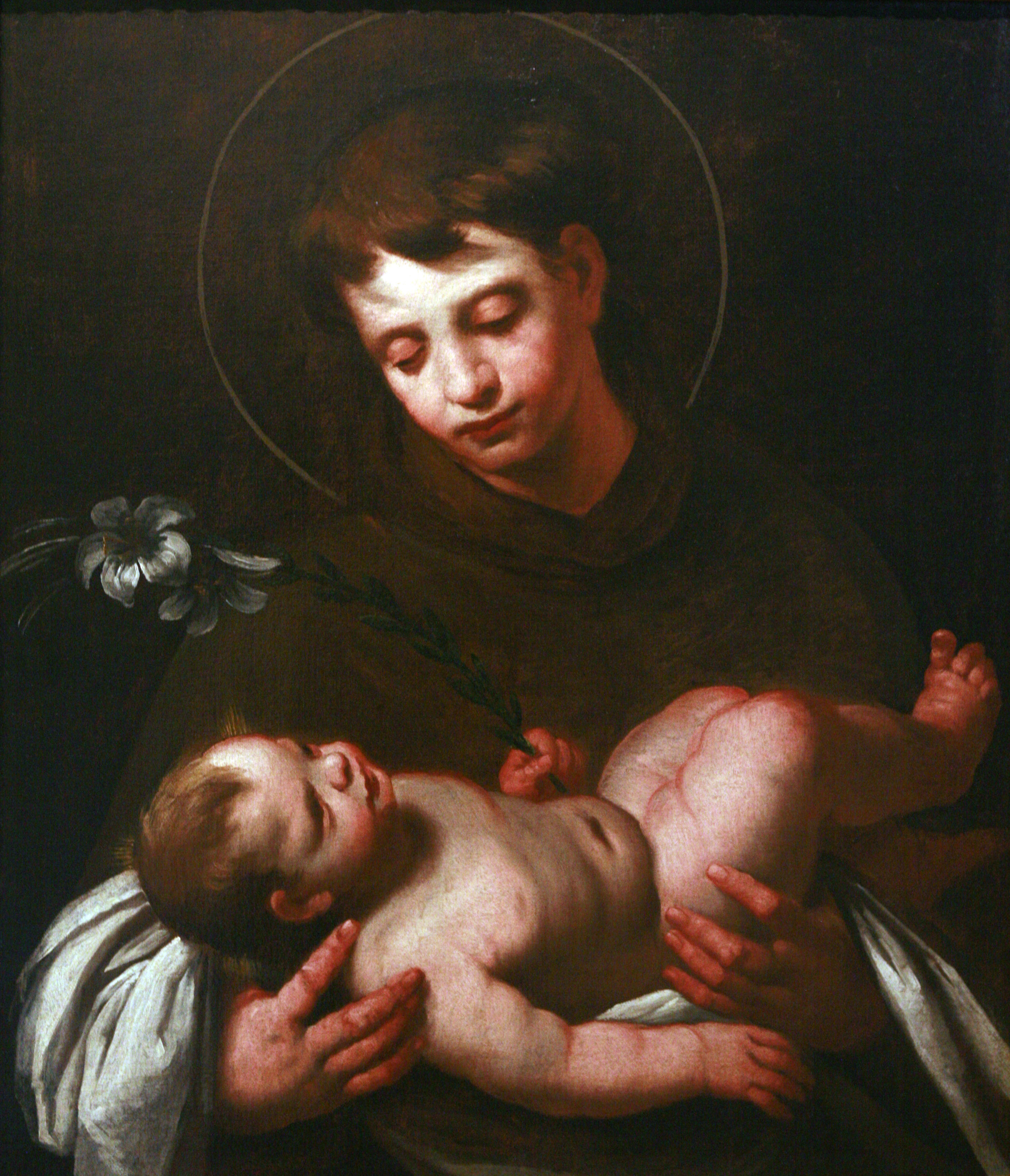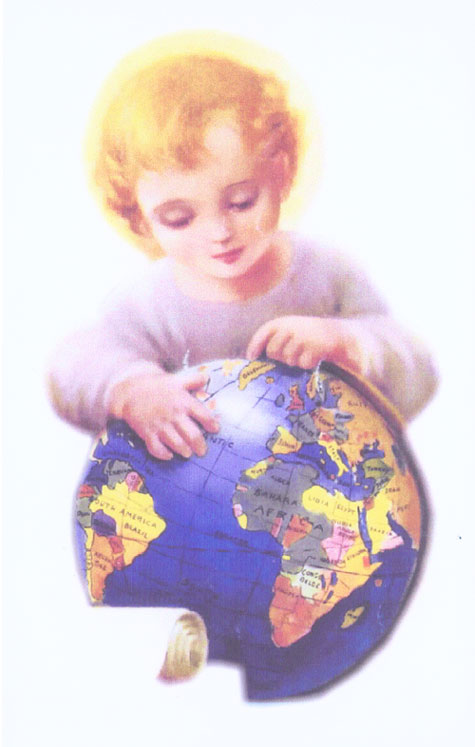Source(Google.com.pk)
Picture Of Baby Jesus Biography
Among the treasures of the Royal Monastery of Saint Elizabeth in Madrid is this sixteenth-century wooden figure of Baby Jesus. The Augustinian Recollect Sisters still have a vivid memory of Saint Josemaría, then a young priest, who was their chaplain from 1931 and rector of the Foundation from 1934. He wrote in his personal notes: “On my way out of the cloister they showed me, in the vestibule, a Christ Child which was a darling. I have never seen a better-looking Baby Jesus! Totally captivating. They uncovered it. He has his little arms crossed on his breast and his eyes half open. Beautiful. I ate him up with kisses and… would have loved to kidnap him.”
He often used to ask them for the figure to take it home with him. It was closely linked to many happenings deep within his soul, favors and special graces. Today the sisters still call it “Father Josemaría’s Baby Jesus”.
In the book Immersed in God - an interview with Álvaro del Portillo, (Cesare Cavalleri, Princeton, 1996) Mgr Alvaro del Portillo says that Mother Carmen of Saint Joseph “remembers that when the Baby Jesus was in the sacristy of the church during the Christmas season, she would often see how Father Josemaría would talk to it, sing to it and rock it, as if it was a real baby.”
“The Child Jesus,” wrote Saint Josemaría. “How this devotion has taken hold of me since I first laid eyes on that consummate Thief that my nuns keep in the vestibule of their cloister! Child Jesus, adolescent Jesus – I like to see you that way, Lord, because… it makes me more daring. I like to see you as a little boy, a helpless child, because it makes me feel like you need me.”
The Nativity of Jesus, also The Nativity, refers to the accounts of the birth of Jesus, primarily based on the two accounts in the gospels of Luke and Matthew, and secondarily on some apocryphal texts. The word is anglicized from Latin De nativitate Iesu, a section title in the Vulgate.
The canonical gospels of Luke and Matthew describe Jesus being born in Bethlehem, in Judea, to a virgin mother. Luke features the Christmas story, in which Joseph and Mary, as part of a census, travel to Bethlehem, where Jesus is born and laid in a manger.[1] Angels proclaim him a savior for all people, and shepherds come to adore him. In Matthew, wise men follow a star to Bethlehem to bring gifts to Jesus, born the King of the Jews. King Herod massacres all the toddler boys in Bethlehem to kill Jesus, but the family flees to Egypt and later settles in Nazareth. Scholars debate whether these two accounts can be reconciled or not, and some view the narratives as non-historical.[2][3][4][5] Some scholars view the discussion of historicity as secondary, given that gospels were primarily written as theological documents rather than chronological timelines.[6][7][8][9] Other traditional Christian scholars maintain that the two accounts do not contradict each other, pointing to the similarities between them.[10]
The main religious celebration among members of the Catholic Church and other Christian groups is the Church service on Christmas Eve or on the morning of Christmas Day. During the forty days leading up to Christmas, the Eastern Orthodox Church practices the Nativity Fast, while the majority of Christian congregations (including the Catholic Church, the Anglican Communion, many Mainline churches, and Baptists) begin observing the liturgical season of Advent four Sundays before Christmas—both are seen as times of spiritual cleansing, recollection and renewal to prepare for the celebration of the birth of Jesus.
In Christian theology, the Nativity of Jesus concerns the Incarnation of Jesus as the second Adam, in fulfilment of the divine will of God, undoing the damage caused by the fall of the first man, Adam. The Artistic depiction of Nativity has been a major subject for Christian artists since the 4th century. Since the 13th century, the Nativity scene has emphasized the humility of Jesus and promoted a more tender image of him, as a major turning point from the early "Lord and Master" image, affecting the basic approaches of Christian pastoral ministry



Picture Of Baby Jesus Biography
Among the treasures of the Royal Monastery of Saint Elizabeth in Madrid is this sixteenth-century wooden figure of Baby Jesus. The Augustinian Recollect Sisters still have a vivid memory of Saint Josemaría, then a young priest, who was their chaplain from 1931 and rector of the Foundation from 1934. He wrote in his personal notes: “On my way out of the cloister they showed me, in the vestibule, a Christ Child which was a darling. I have never seen a better-looking Baby Jesus! Totally captivating. They uncovered it. He has his little arms crossed on his breast and his eyes half open. Beautiful. I ate him up with kisses and… would have loved to kidnap him.”
He often used to ask them for the figure to take it home with him. It was closely linked to many happenings deep within his soul, favors and special graces. Today the sisters still call it “Father Josemaría’s Baby Jesus”.
In the book Immersed in God - an interview with Álvaro del Portillo, (Cesare Cavalleri, Princeton, 1996) Mgr Alvaro del Portillo says that Mother Carmen of Saint Joseph “remembers that when the Baby Jesus was in the sacristy of the church during the Christmas season, she would often see how Father Josemaría would talk to it, sing to it and rock it, as if it was a real baby.”
“The Child Jesus,” wrote Saint Josemaría. “How this devotion has taken hold of me since I first laid eyes on that consummate Thief that my nuns keep in the vestibule of their cloister! Child Jesus, adolescent Jesus – I like to see you that way, Lord, because… it makes me more daring. I like to see you as a little boy, a helpless child, because it makes me feel like you need me.”
The Nativity of Jesus, also The Nativity, refers to the accounts of the birth of Jesus, primarily based on the two accounts in the gospels of Luke and Matthew, and secondarily on some apocryphal texts. The word is anglicized from Latin De nativitate Iesu, a section title in the Vulgate.
The canonical gospels of Luke and Matthew describe Jesus being born in Bethlehem, in Judea, to a virgin mother. Luke features the Christmas story, in which Joseph and Mary, as part of a census, travel to Bethlehem, where Jesus is born and laid in a manger.[1] Angels proclaim him a savior for all people, and shepherds come to adore him. In Matthew, wise men follow a star to Bethlehem to bring gifts to Jesus, born the King of the Jews. King Herod massacres all the toddler boys in Bethlehem to kill Jesus, but the family flees to Egypt and later settles in Nazareth. Scholars debate whether these two accounts can be reconciled or not, and some view the narratives as non-historical.[2][3][4][5] Some scholars view the discussion of historicity as secondary, given that gospels were primarily written as theological documents rather than chronological timelines.[6][7][8][9] Other traditional Christian scholars maintain that the two accounts do not contradict each other, pointing to the similarities between them.[10]
The main religious celebration among members of the Catholic Church and other Christian groups is the Church service on Christmas Eve or on the morning of Christmas Day. During the forty days leading up to Christmas, the Eastern Orthodox Church practices the Nativity Fast, while the majority of Christian congregations (including the Catholic Church, the Anglican Communion, many Mainline churches, and Baptists) begin observing the liturgical season of Advent four Sundays before Christmas—both are seen as times of spiritual cleansing, recollection and renewal to prepare for the celebration of the birth of Jesus.
In Christian theology, the Nativity of Jesus concerns the Incarnation of Jesus as the second Adam, in fulfilment of the divine will of God, undoing the damage caused by the fall of the first man, Adam. The Artistic depiction of Nativity has been a major subject for Christian artists since the 4th century. Since the 13th century, the Nativity scene has emphasized the humility of Jesus and promoted a more tender image of him, as a major turning point from the early "Lord and Master" image, affecting the basic approaches of Christian pastoral ministry
Picture Of Baby Jesus

Picture Of Baby Jesus

Picture Of Baby Jesus

Picture Of Baby Jesus


Picture Of Baby Jesus


Picture Of Baby Jesus


Picture Of Baby Jesus


Picture Of Baby Jesus


Picture Of Baby Jesus



No comments:
Post a Comment